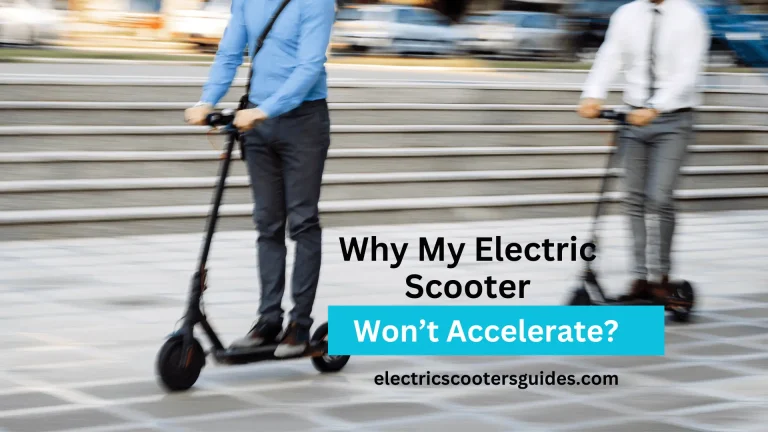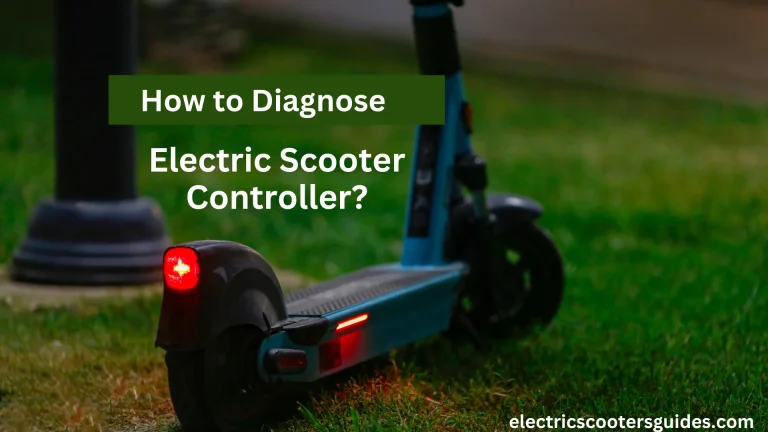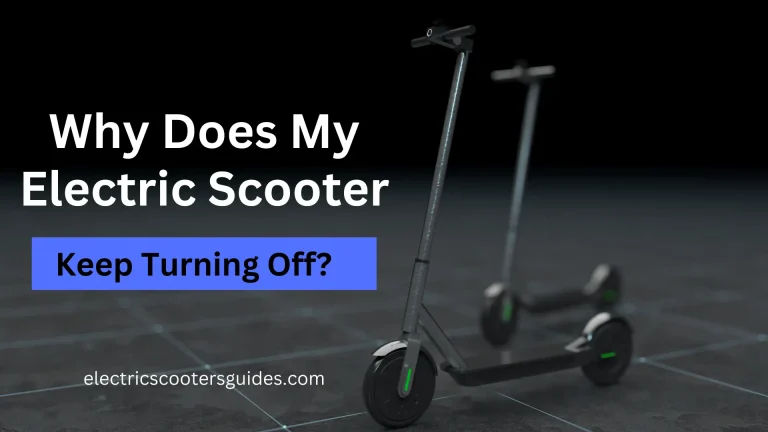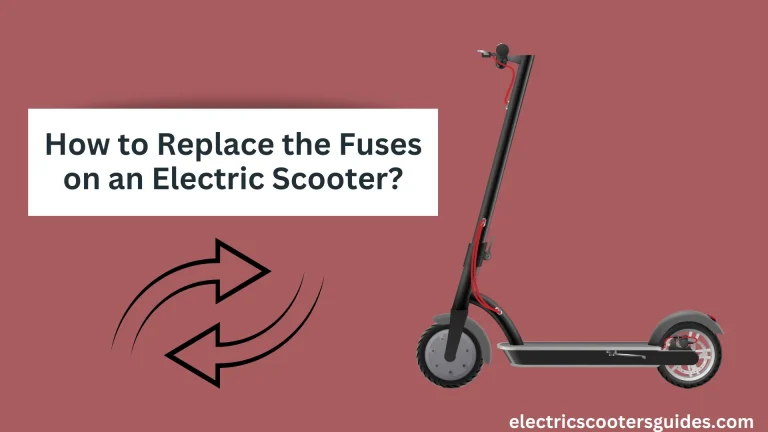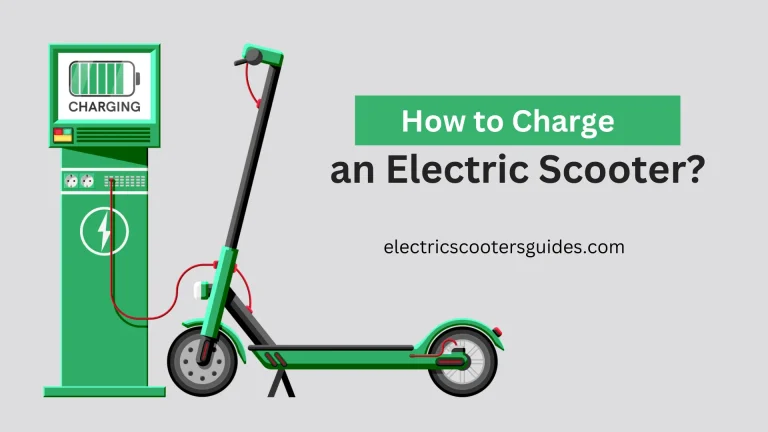How to Lubricate Electric Scooter? Explained

Maintaining your electric scooter is crucial to keep it running smoothly and lasting longer. One important task is lubrication, which reduces friction and extends the scooter’s lifespan while increasing its range.
When you ride your scooter, dirt and mud can build up, creating friction that wears down parts faster and reduces how far you can go on a single charge. Regularly lubricating key areas can prevent this.
Now, let’s dive into how to lubricate electric scooter. But before we get into that, let’s answer two important questions: What type of lubricant should you use, and how often should you lubricate your electric scooter?
What Type of Lubricant You Should Use on Your Electric Scooter?
Choosing the right lubricant for your electric scooter is crucial to keep it running smoothly. You should use a lubricant that is specifically designed for use on electric scooters or similar machinery. Look for lubricants that are silicone-based or lithium-based, as they are often recommended for electric vehicles.
These types of lubricants provide excellent protection against friction and wear, while also being resistant to water and dirt, which is important for outdoor use. Avoid using lubricants that contain petroleum or other harsh chemicals, as they can damage the components of your scooter over time.
Additionally, make sure to read the manufacturer’s recommendations for lubrication in your scooter’s manual, as they may have specific guidelines or recommendations for the type of lubricant to use. By using the right lubricant, you can ensure that your electric scooter stays in good condition and performs at its best for years to come.
How to Lubricate Electric Scooter?
Lubricating your electric scooter is a straightforward process that can help maintain its performance and extend its lifespan. Here’s a step-by-step guide to lubricating every part of your electric scooter:
- Gather Your Supplies: Before you start, make sure you have the necessary supplies. You’ll need a suitable lubricant (such as silicone-based or lithium-based lubricant), a clean cloth or rag, and possibly a wrench or screwdriver to access certain parts of the scooter.
- Prepare Your Scooter: Turn off your electric scooter and ensure that it is parked on a flat, stable surface. This will make it easier to access the various parts that need lubrication.
- Identify the Key Areas: Take a moment to identify the key areas of your scooter that require lubrication. These typically include the moving parts such as the wheel bearings, folding mechanisms, brake levers, throttle, and kickstand.
- Clean the Parts: Before applying lubricant, it’s essential to clean the parts thoroughly to remove any dirt, dust, or old lubricant that may be present. Use a clean cloth or rag to wipe down the surfaces and ensure they are free from debris.
- Apply Lubricant: Once the parts are clean, apply a small amount of lubricant to each of the key areas. Be careful not to over-lubricate, as excess lubricant can attract dirt and debris, leading to potential issues.
- Work the Lubricant In: After applying the lubricant, work the moving parts to ensure that the lubricant is distributed evenly. For example, spin the wheels, fold and unfold the scooter, engage the brake levers, and operate the throttle to help spread the lubricant throughout the mechanisms.
- Wipe off Excess: After working the lubricant into the parts, use a clean cloth or rag to wipe off any excess lubricant. This will help prevent dirt and debris from sticking to the scooter and keep it clean.
- Test Your Scooter: Once you’ve lubricated all the necessary parts, test your scooter to ensure that everything is working smoothly. Take it for a short ride or manually move the wheels, fold and unfold the scooter, and engage the brakes and throttle to verify that there are no issues.
- Regular Maintenance: Make lubricating your electric scooter a regular part of your maintenance routine. Depending on how often you ride and the conditions you ride in, you may need to lubricate your scooter every few months or after a certain number of miles.
By following these steps and maintaining a regular lubrication schedule, you can keep your electric scooter running smoothly and prolong its lifespan for years to come. You should also know how to ride an electric scooter in winter.
When Should I Lubricate the Electric Scooter?
Knowing when to lubricate your electric scooter is essential for maintaining its performance and longevity. As a general rule of thumb, you should lubricate your scooter’s moving parts regularly, ideally every few months or after every 100-200 miles of riding.
However, it’s essential to pay attention to how your scooter feels and sounds while riding. If you notice any unusual noises, stiffness in the movement, or increased resistance, it might be a sign that the scooter needs lubrication sooner than expected.
Additionally, if you often ride your scooter in wet or muddy conditions, you may need to lubricate it more frequently to prevent corrosion and damage from moisture.
Overall, keeping a regular maintenance schedule and staying vigilant for any signs of wear or deterioration will help you determine when it’s time to lubricate your electric scooter. By staying proactive with maintenance, you can ensure that your scooter continues to provide smooth and reliable rides for a long time.
Conclusion
In conclusion, regular lubrication of your electric scooter’s moving parts is vital for maintaining its performance and durability. By applying the appropriate lubricant and following a consistent maintenance schedule, you can reduce friction, prevent wear and tear, and ensure smooth rides every time. Don’t forget to periodically clean and inspect your scooter to keep it in top condition, allowing you to enjoy hassle-free rides for years to come.

